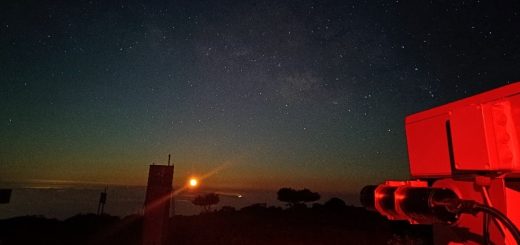The arrival of spring coincided with a cold intrusion at Izaña and a partial solar eclipse
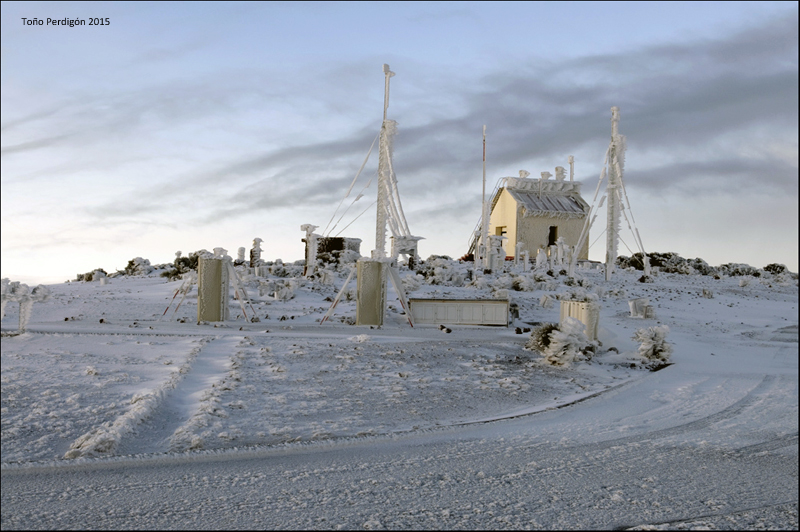
The beginning of astronomical spring took place on March 20th at 22:45 local time. However, from a climatological point of view, it is considered that this season began on March 1st, leaving a winter at Izaña had an average temperature of 4 ° C and a total rainfall of 45 liters per square meter. These records have conferred a cold (the average temperature is the lowest since the 2008-2009 winter) and very dry character. In addition, between 18 and 24 March, coinciding with the change of season, the Canary Islands were affected by a cold outbreak that caused heavy rainfall, snowfall and strong temperature decrease over 1,500 meters a. s.l. This situation was caused by a cold deep centred on the Gulf of Cadiz, which produced N and NW circulation on the Canaries with very cold and successive shortwave air disturbances embedded in the back of the low flow affecting the islands in the form of instability line, the last of which caused stormy developments.
At Izaña Atmospheric Observatory, situated at 2364 meters altitude, the arrival of the cold outbreak began to be felt on March 18th with an increase in wind speed which reached above 100 Km/h gusts on 23th, a sharp drop in temperature, and an increase in relative humidity, which lasted for several days. Note that the temperature remained below zero degrees Celsius for almost six consecutive days, reaching a minimum record of -5,1ºC the 24th, only exceeded this winter by -5,4ºC measured on February 20th.
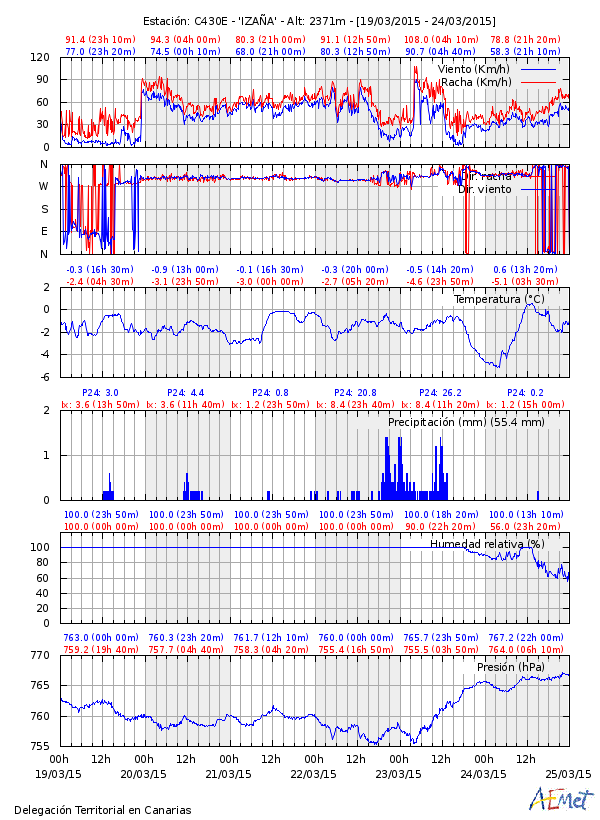
Graph of atmospheric parameters recorded in the Observatory Izaña between 19th and 24th March.
During the Cold outbreak ice accumulation (meteor known as rime) was observed in vegetation and instrumental Observatory. This phenomenon is due to the instantaneous icing of super-cooled fog droplets when they impact with surfaces exposed to the wind. Also the snow showed up during the storm, especially on days 22nd and 23th, with more than 44 liters per square meter fall as snow that left snow thicknesses on ground of between 10 and 20 cm in areas exposed to wind, and half a meter in sheltered areas.
Also some lightning strikes fell in the vicinity of the Observatory with no damages on the instrumentation. Only a lightning rod was damaged, but not by the lightning strike itself but by the weight of ice on the mast:
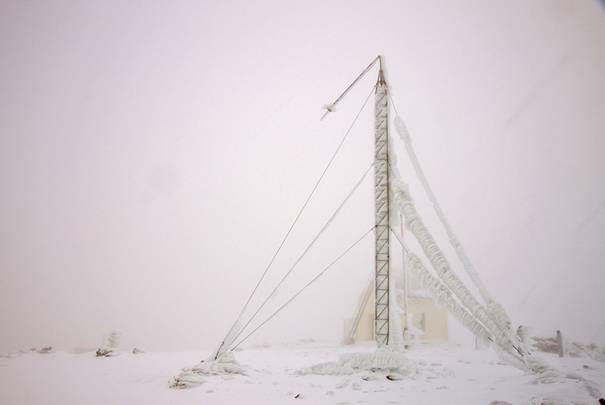
The bright side of the storm is given by the spectacular images with ice and snow as protagonists:
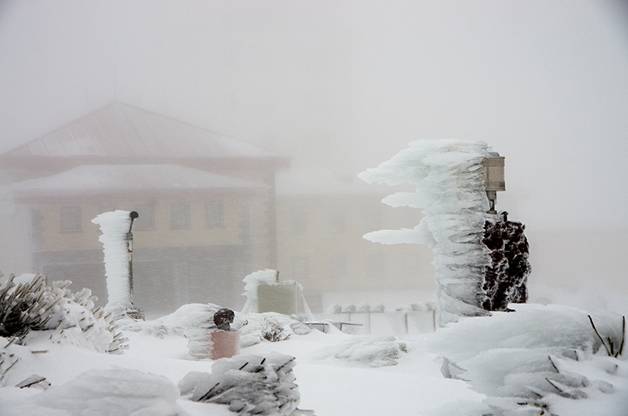
Aspect of vegetation and some instruments with rime. In the background the main facade of the Observatory is observed with some difficulty because of the heavy snow was falling at the time of photography done.
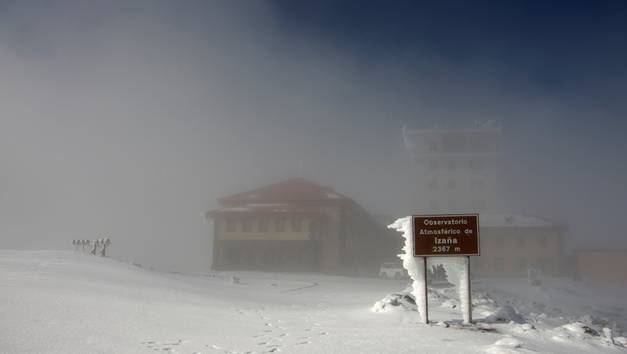
The access road to the Observatory remained buried by snow, while in the Observatory signal we observe a major ice. In the background, the Observatory, in a fog.
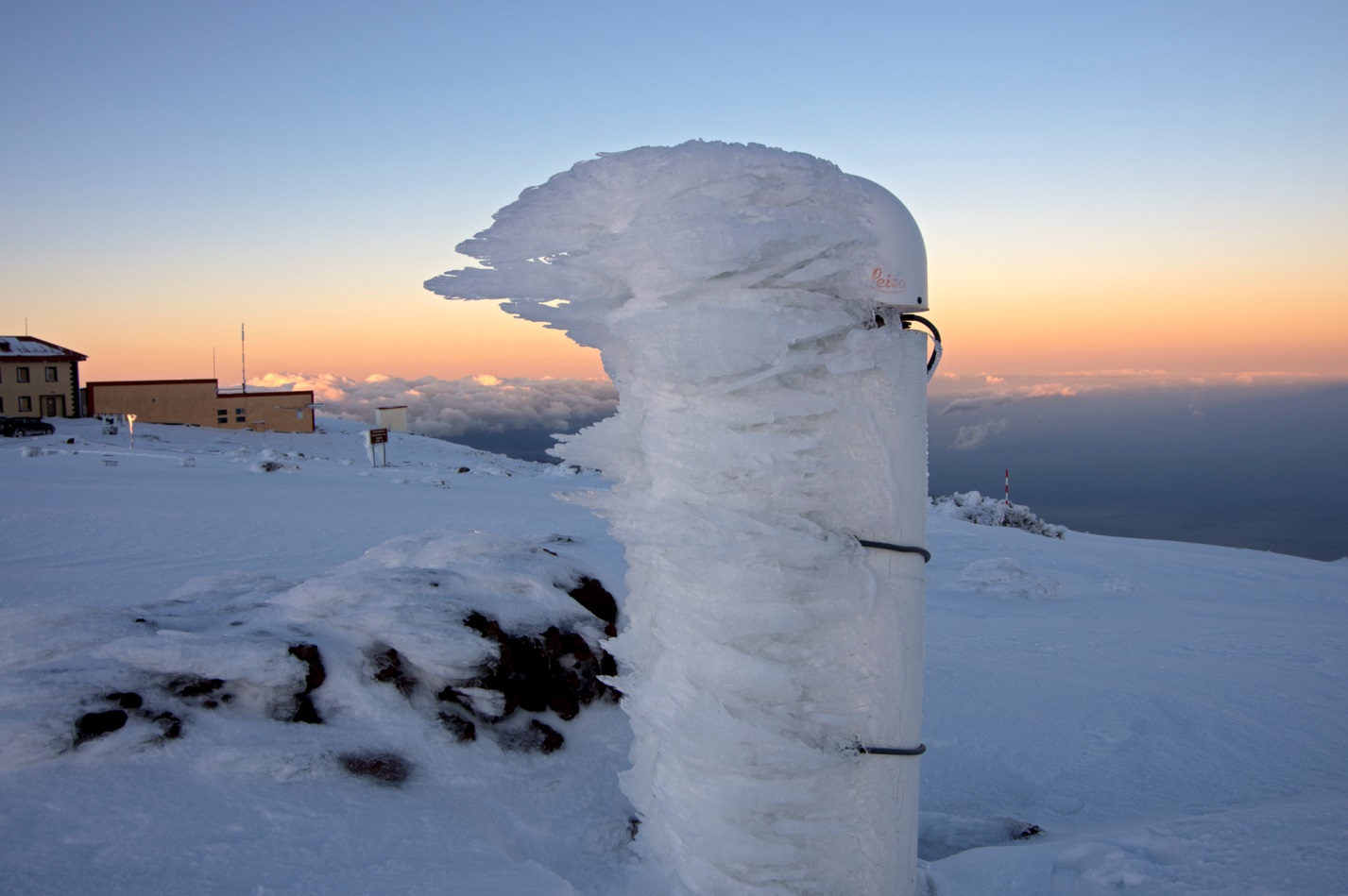
Rime on the GPS the National Geographic Institute has installed at the Izaña observatory meteorologica garden.

Ramón Ramos and Rubén del Campo reviewing scientific instrumentation installed on the roof to assess possible damage from ice accumulation.

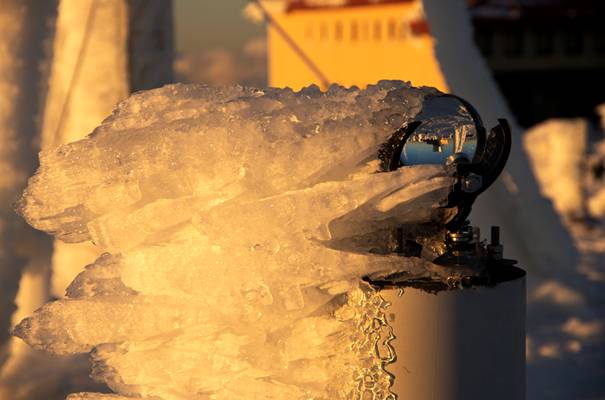
Instrumental located in the meteorological garden with rime. In the top photo, weather shelter where instruments for measuring humidity and temperature are. In the bottom picture, Campbell-Stokes heliograph, used for sunshine records, with a significant accumulation of ice.
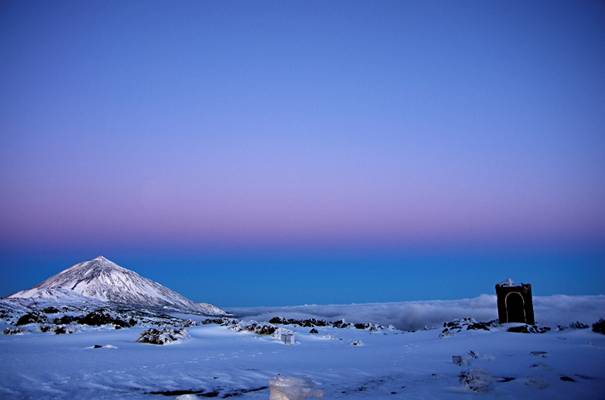
Dawn on March 24th, at 6:55 local time. Once snowfall stopped and appeared clear skies, we could see the peak of Mount Teide and anti twilight arch, also known as “Belt of Venus”, corresponding to the pink strip that we see in the sky right above the Teide, which is due to the lighting of the high layers of the atmosphere by the sun when it has not yet appeared on the horizon.
This storm was the strongest of the season, but there was another episode of significant rime last February 20th in which we recorded a very illustrative short video of how ice adheres to the instrumental and vegetation. It also gives an idea of what prevailing environmental conditions while ice accumulation occurs. This video is available→ HERE
In the storm from 18th to 24th March snow accumulation was important not only at Izaña but generally throughout the eastern part of the Teide National Park, prompting the closure of roads giving access to the summits of Tenerife. The Izaña’s staff had to be evacuated by caterpillar vehicle of the Army. We take this opportunity to thank the support to the Army in these situations. Also noteworthy is the important efforts made by the Road operators of the Cabildo de Tenerife to leave the way clear of snow and facilitate normal personnel access to the observatory.

Left: caterpillar vehicle evacuating staff Izaña Atmospheric Observatory. Right: Machine Snowblower from the Cabildo de Tenerife cleaning the road.
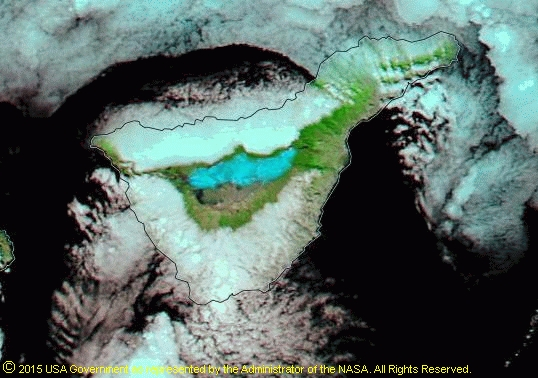
Here’s how MODIS (NASA) saw snow covering part of the central area of the island of Tenerife (blue tone) from space on March 25th. The RGB image composition of MODIS channels 7, 2 and 1 is available at: https://earthdata.nasa.gov/labs/worldview/
The arrival of spring also included the presence a beautiful astronomical phenomenon: a partial solar eclipse, which occurred in the early hours of March 20th. The solar disk was hidden by the Moon by about 44% at maximum latitude of the Canaries time. Very cloudy skies in low areas hampered the observation of the eclipse, but our fellow Toño Perdigón (from the Observatory, at 2364 m a.s.l.) and Ruben del Campo (from Santa Cruz de Tenerife, 40m a.s.l.) had the good fortune to photograph:
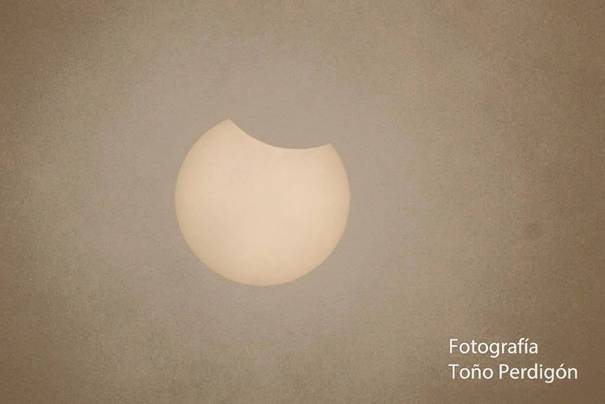
Initial phase of the eclipse seen from Izaña. The brown color of the sky is due to a thin layer of Stratus that caused fog in the vicinity of the Observatory.

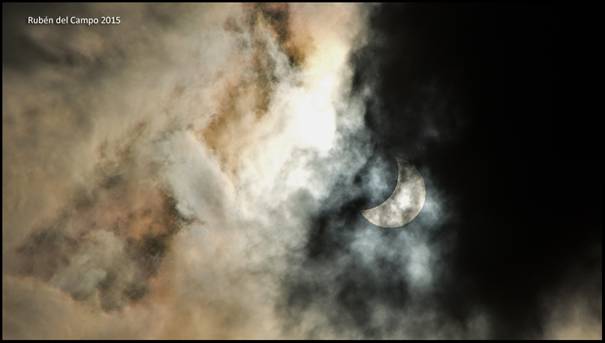
Two images of the eclipse from Santa Cruz de Tenerife, where very cloudy skies did not allow a prolonged observation of the phenomenon.


